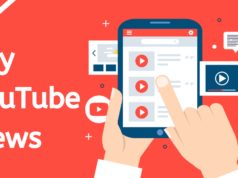
When somebody’s looking to hire you (for whatever thing you do), they’re looking for ROI. Whether you’re a designer, a real estate agent, a hairdresser, or an artist, they’re looking for some kind of return on their investment.
…any purchase ever made has been with some kind of return on investment in mind…
Most people think about ROI as something like when someone buys ads to get potential clients to their place of business, but it can be more than this. Somebody might need a haircut to look good on a date and thereby get further along with their potential partner, or they might need it for a big business meeting or interview. They might want a piece of art to look at every day if they know it will bring them happiness; another piece of art might bring them a sense of accomplishment.
Two people might buy the same thing for different types of what they perceive as ROI. It might be a more ethereal return on investment than material, and it all depends on the product or service and the motivation of the buyer. Anyway you slice it, any purchase ever made has been with some kind of return on investment in mind.
What kind of ROI do you offer your clients? Can you quantify it? Can you put it in easy to understand words or pictures so the client gets it right off the bat? Can you show how easy it is for people to get the results they want after they’ve purchased your services? Too often, this is a tertiary goal of someone’s marketing strategy.
Enter the infographic. Infographics of been around since the beginning of time (think of the first cave paintings of the hunt), showing visually the depictions of amounts, strategies, dangers, and potential gains. The emergence of the infographic has dovetailed with our attention span, which has dropped drastically. People are consuming much more information in shorter and shorter bursts and in many different place, thusly, they’re craving more dynamic experiences to engage for longer periods of time.
What can an infographic offer your potential clients? A document that combines easing understanding of your product and the ROI they can expect on one page should make their decision about your company easier.
Here are some of the advantages of an infographic when thinking about marketing your business:
- They can be consumed from any device with a screen
- Infographics are silent, so you can view them anytime without worrying about bothering others
- They feed into our desire to consume large amounts of data quickly
- They deliver impactful statements quickly, with big numbers and helpful information in the right places
- Infographics can be designed to read like a story, letting the viewer build up a bias along the way which leads to the final conclusion
- Interesting information shown in a curious way is sharable, and shareability is marketability
So, how could you show your business’ potential ROI to a client? Consider the infographic. You can design it to dovetail with the look and feel of your current corporate identity and work it effortlessly into your marketing strategy. It’s an attachment, it’s a handout, it’s a tweet, it’s a status update… who knows? It’s potentially a landing page that helps you go viral!
Hagan Blount designs infographic resumes for some really impressive people. His resume and experiments in personal branding have gotten him featured in Wired, Mashable, US News, Fast Company, and The Huffington Post. While an infographc resume may not be the answer for you, his clients report noticeable increases in callbacks and interviews when they start using their new CVs.








